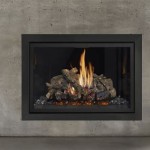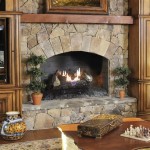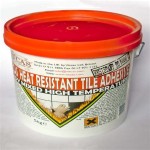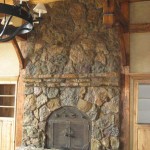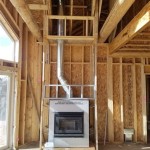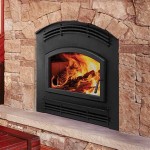Refacing a Marble Fireplace with Stone: A Comprehensive Guide
Marble fireplaces, while elegant and classic, may not always align with evolving design aesthetics or withstand the test of time without showing signs of wear. Refacing a marble fireplace with stone offers a compelling solution for homeowners seeking to update their living space, introduce a more rustic or contemporary feel, or simply conceal imperfections in their existing marble surround. This process involves covering the existing marble with a new layer of stone, completely transforming the fireplace's appearance. This article will delve into the specifics of refacing a marble fireplace with stone, outlining the key considerations, materials, and steps involved in achieving a successful transformation.
The decision to reface, rather than replace, an entire fireplace offers several advantages. Refacing can be a more cost-effective option than demolition and complete reconstruction, particularly if the existing fireplace structure is sound. It also minimizes the disruption to the home, reducing the amount of debris and construction time. Furthermore, refacing allows homeowners to retain the existing fireplace functionality while significantly altering its visual appeal. Choosing the right stone for the refacing project is crucial for both aesthetic and practical reasons. The selection process should consider the homeowner's desired style, the existing décor of the room, and the technical properties of the stone itself.
Key Considerations Before Starting the Refacing Project
Before embarking on a fireplace refacing project, a thorough assessment of the existing structure is paramount. This assessment should focus on the condition of the marble surround and the firebox. Check for cracks, chips, or loose sections of marble. Determine if the existing marble is securely attached to the underlying structure or if it exhibits any signs of instability. Any structural issues must be addressed before proceeding with the refacing process. Failing to do so could compromise the integrity of the new stone facade.
The type of fireplace—whether it is a wood-burning, gas, or electric model—will also influence the choice of stone. Wood-burning fireplaces generate significant heat, so the stone selected must be capable of withstanding high temperatures without cracking or discoloration. Gas fireplaces produce less direct heat but still require heat-resistant materials. Electric fireplaces typically do not generate as much heat, allowing for a wider range of stone options. Consult with a professional to ensure that the chosen stone is suitable for the specific type of fireplace.
Building codes and local regulations often govern fireplace construction and renovation. Before commencing any work, it is essential to research and comply with all applicable codes and regulations. This may involve obtaining permits, adhering to specific safety standards, and ensuring that the refacing project meets fire safety requirements. Failure to comply with these regulations can result in fines, project delays, and potential safety hazards.
Selecting the Right Stone for Your Fireplace
The selection of stone for refacing a marble fireplace is a critical decision that will significantly impact the final aesthetic. A wide variety of stone options are available, each with its unique characteristics and suitability for fireplace applications. Natural stone, such as granite, slate, limestone, and travertine, offers a timeless and elegant appeal. Each type of natural stone exhibits variations in color, texture, and veining, creating a unique and visually interesting surface. Manufactured or cultured stone is another option, providing a more uniform appearance and often at a lower cost than natural stone. Cultured stone is typically made from a blend of cement, aggregates, and pigments, replicating the look and feel of natural stone.
Granite is a durable and heat-resistant stone, making it an excellent choice for wood-burning fireplaces. Its dense composition and resistance to staining make it a low-maintenance option. Slate offers a more rustic and textured appearance, with a range of colors from dark gray to earthy tones. Limestone provides a softer, more porous surface than granite, requiring sealing to prevent staining. Travertine offers a classic and elegant look, with distinctive veining and a warm, inviting tone. When selecting stone, consider the overall style and décor of the room. A modern aesthetic may benefit from a sleek and minimalist stone like granite or slate, while a more traditional setting may be enhanced by limestone or travertine.
The size and shape of the stone are also important considerations. Larger stone slabs can create a more seamless and contemporary look, while smaller individual stones can add texture and visual interest. The thickness of the stone will affect the overall depth of the refaced fireplace and may require adjustments to the surrounding trim and mantel. Obtain samples of the desired stone and compare them to the existing marble surround and the surrounding décor. This will help to ensure that the chosen stone complements the existing elements and achieves the desired aesthetic.
Step-by-Step Guide to Refacing a Marble Fireplace with Stone
The refacing process involves several key steps, starting with careful preparation and culminating in the final finishing touches. Safety is paramount throughout the entire process, requiring appropriate personal protective equipment (PPE), such as safety glasses, gloves, and a dust mask. Ensure adequate ventilation in the work area to minimize exposure to dust and fumes.
Preparation: Begin by thoroughly cleaning the existing marble surface. Remove any dirt, grease, or loose debris. If the marble has a glossy finish, lightly roughen it with sandpaper to create a better bonding surface for the adhesive. Apply a bonding agent or primer specifically designed for adhering stone to marble. This will enhance the adhesion and prevent the stone from detaching over time. The selection of a high-quality bonding agent is crucial to the longevity of the refaced fireplace. Ensure that the bonding agent is compatible with both the marble and the chosen stone.
Installation: Apply a generous layer of thin-set mortar to the back of the stone. Use a notched trowel to create ridges in the mortar, ensuring even distribution and optimal adhesion. Carefully position the stone on the prepared marble surface, pressing firmly to ensure a strong bond. Use spacers to maintain consistent grout lines between the stones. Use a level to ensure that the stone is properly aligned and plumb. Work systematically, installing the stones one at a time and allowing the mortar to cure according to the manufacturer's instructions. Depending on the size and complexity of the project, it may be necessary to cut the stone to fit around the firebox opening or other architectural features. Use a wet saw or angle grinder with a diamond blade for precise cuts. If installing larger stone slabs, consider using mechanical fasteners, such as screws or anchors, in addition to the thin-set mortar. This will provide added support and prevent the slabs from shifting or detaching over time.
Grouting and Finishing: Once the mortar has fully cured, remove the spacers and apply grout to fill the gaps between the stones. Select a grout color that complements the stone and enhances the overall aesthetic. Use a grout float to press the grout into the joints, ensuring that they are completely filled. Remove excess grout with a damp sponge, being careful not to disturb the grout within the joints. After the grout has partially dried, use a clean, dry cloth to buff the surface and remove any grout residue. Once the grout has fully cured, apply a sealant to protect the stone and grout from staining and moisture. The type of sealant will depend on the type of stone and grout used. Consult with a stone supplier or installer for recommendations on the appropriate sealant. Regularly clean the refaced fireplace with a mild detergent and water to maintain its appearance and prevent the buildup of dirt and grime. Avoid using harsh chemicals or abrasive cleaners, as they can damage the stone and grout.
Refacing a marble fireplace with stone requires careful planning, meticulous execution, and attention to detail. By following these guidelines and consulting with professionals as needed, homeowners can successfully transform their fireplaces and create a stunning focal point in their living spaces.

Marble Fireplace Makeover Centsational Style

9 Trending Ideas For Refacing Your Fireplace

Diy This Modern Marble Fireplace For Under 100 Bucks Creative Fashion Blog

Marble Fireplace Makeover Centsational Style Tile Surround Remodel Home

Remodel Your Fireplace In Natural Stone Use

Our 200 Marble Fireplace Makeover Young House Love

How To Tile Over A Marble Fireplace Surround Surrounds Diy Makeover

How To Tile Over A Marble Fireplace Surround Porch Daydreamer

Read This Before Your Stone Fireplace Makeover Understanding Undertones

15 Fabulous Fireplace Refacing Ideas Average But Inspired
Related Posts

